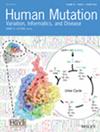Identification of Novel Modifier Genes Associated With Pain in Cystic Fibrosis: An In Silico Gene Discovery
Abstract
Background
Cystic fibrosis (CF) is the most common life-shortening monogenic autosomal recessive disease in Caucasians with diverse and extensive comorbidities. Where the majority of studies have focused on the respiratory and digestive systems, there has been a paucity of research focusing on pain, even though people living with CF have reported a high prevalence and increased severity of pain. Many studies have identified the complex relationship between genotype and phenotype, and growing evidence suggests that the phenotypic variation observed not only depends on the variations in the CF transmembrane conductance regulator (CFTR) gene but also on modifier genes. Gene modifiers (GMs) have been reported to affect many organs or systems in CF. However, there have been no studies on how GMs may influence pain. Therefore, this study is aimed at highlighting potential modifier genes that may affect pain perception in CF and possible responses to therapeutics.
Methods
The bioinformatics workflow adopted includes database and literature mining, pathway enrichment analysis, protein–protein interactions evaluation and drug–gene network investigation.
Results
We identified seven potential pain modifiers in CF, including chymotrypsin C (CTRC), serine protease inhibitor Kazal-Type 1 (SPINK1), tumour necrosis factor (TNF), ATP-binding cassette subfamily B Member 1 (ABCB1), protease serine 1 (PRSS1) and transforming growth factor beta 1 (TGFB1) interacting with the CFTR gene. The analysis of the biochemical pathways indicates that signal transduction and the immune system are likely to be involved in pain processes. The specific GMs, TNF and ABCB1, are found to be within the central hub genes, indicating their potential influence on the pain pathways in CF.
Conclusions
This in silico analysis highlights potential genes and biochemical pathways implicated in pain pathways that could significantly impact pain perception in people living with CF and their response to prescribed therapies. Further functional analyses are needed to include CF participants and provide a physiological relevance on how genetic polymorphisms of identified GMs may impact their pain phenotype or profile.


 求助内容:
求助内容: 应助结果提醒方式:
应助结果提醒方式:


